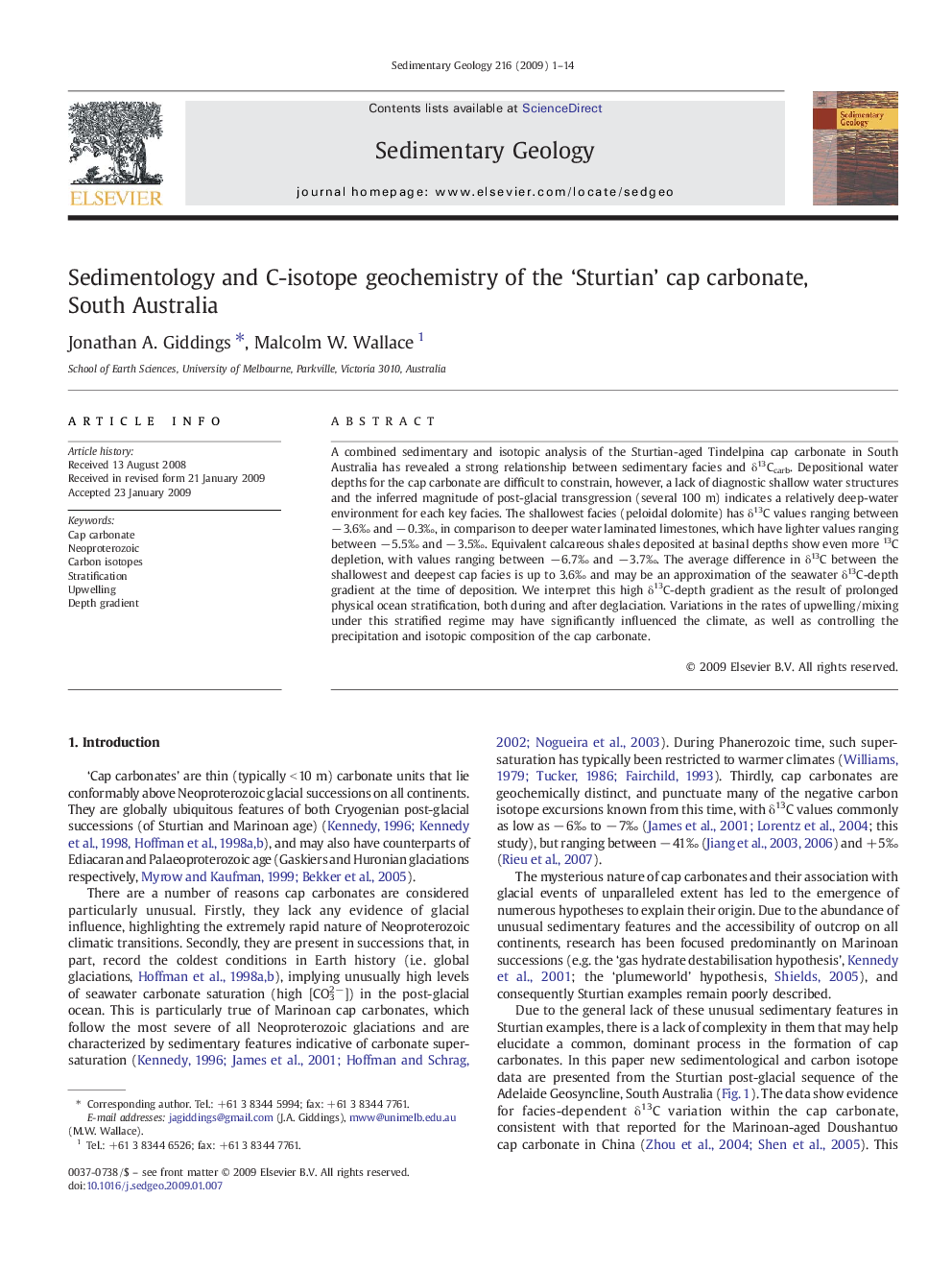| Article ID | Journal | Published Year | Pages | File Type |
|---|---|---|---|---|
| 4690412 | Sedimentary Geology | 2009 | 14 Pages |
A combined sedimentary and isotopic analysis of the Sturtian-aged Tindelpina cap carbonate in South Australia has revealed a strong relationship between sedimentary facies and δ13Ccarb. Depositional water depths for the cap carbonate are difficult to constrain, however, a lack of diagnostic shallow water structures and the inferred magnitude of post-glacial transgression (several 100 m) indicates a relatively deep-water environment for each key facies. The shallowest facies (peloidal dolomite) has δ13C values ranging between − 3.6‰ and − 0.3‰, in comparison to deeper water laminated limestones, which have lighter values ranging between − 5.5‰ and − 3.5‰. Equivalent calcareous shales deposited at basinal depths show even more 13C depletion, with values ranging between − 6.7‰ and − 3.7‰. The average difference in δ13C between the shallowest and deepest cap facies is up to 3.6‰ and may be an approximation of the seawater δ13C-depth gradient at the time of deposition. We interpret this high δ13C-depth gradient as the result of prolonged physical ocean stratification, both during and after deglaciation. Variations in the rates of upwelling/mixing under this stratified regime may have significantly influenced the climate, as well as controlling the precipitation and isotopic composition of the cap carbonate.
